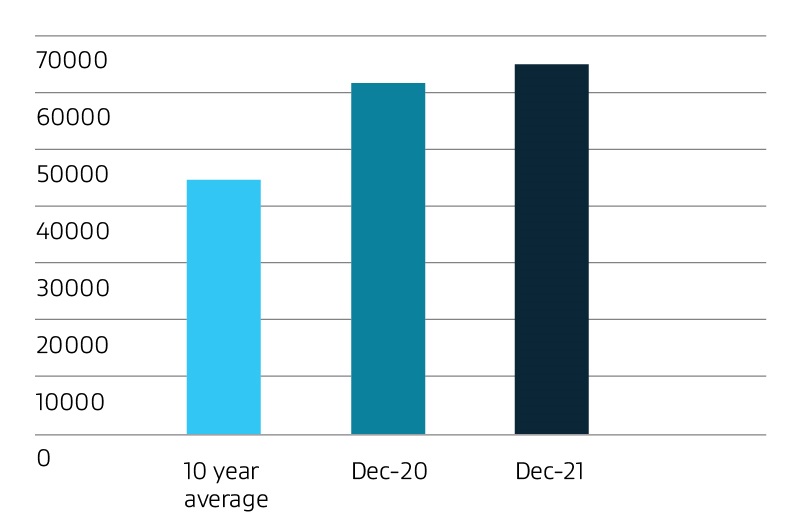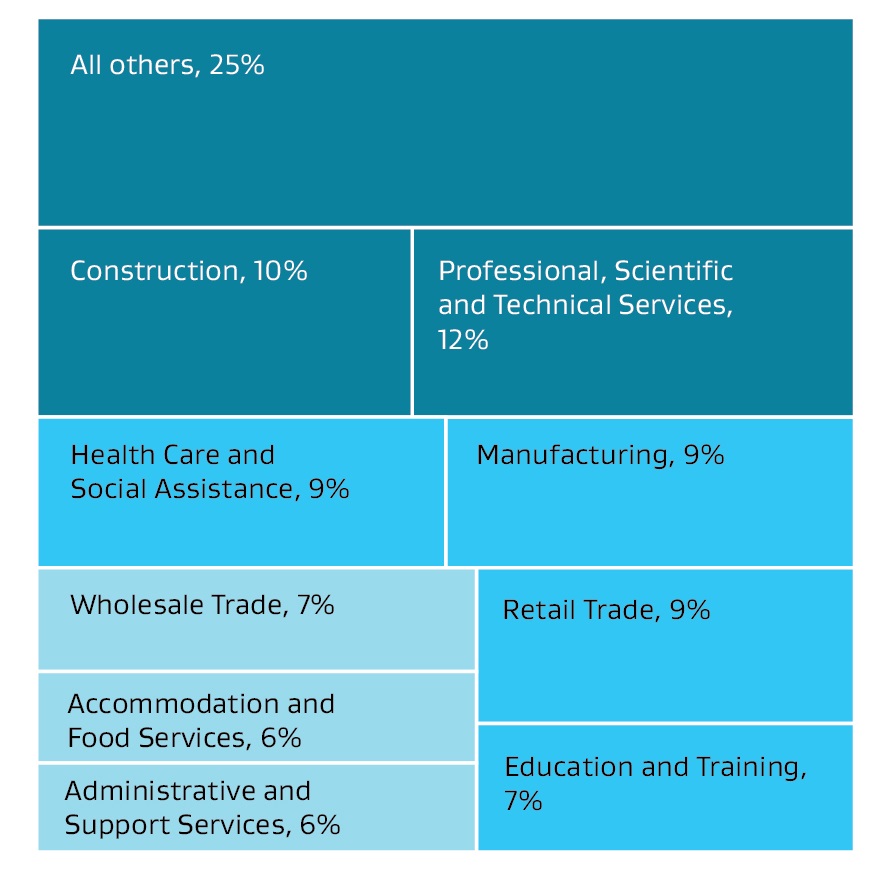Our economy, industry & business
Fuelling the nation's economic powerhouse – why the region needs to put skills and good jobs first for industry.
On this page
Ko te tangata e kai ana i te mātauranga, nōna te ao
Those who seek wisdom and knowledge the world is yours.

Photo: Auckland Unlimited
Tāmaki Makaurau is home to various advanced industries, generating nearly 40% of the country's GDP and almost 36% of filled jobs nationally. However, as the border city of Aotearoa New Zealand, Tāmaki Makaurau was hit hard by COVID-19, facing the longest lockdowns and most challenging economic implications of the country. The post-growth and COVID-19 implications for Tāmaki Makaurau have meant not everybody has benefitted in the region, especially those industries that have been impacted due to COVID-19 restrictions.
The rise in jobseeker numbers suggests young people (aged 18-24) were the most impacted by job losses. It is estimated that Alert Level 3 lockdowns in Tāmaki Makaurau resulted in 200 job losses per day, 250,000 workers being unable to work, and around a 14% reduction in GDP generation. Jobseeker Support recipients in Tāmaki Makaurau in the year to December 2021 increased by 5.4% compared to a year earlier; much higher than the national average for Aotearoa New Zealand at 1.9%. An average of 64,815 people were receiving a Jobseeker Support benefit in Tāmaki Makaurau in the 12 months ended December 2021. This compares with an average of 44,465 since the start of the series in 2012.
Auckland Economic Development Action Plan 2021-24(external link) — Auckland City Council
2021 Benefit Fact Sheets archive(external link) — Ministry of Social Development
Job seeker support recipients for Auckland (annual average)

Source: Ministry of Social Development
Text description of chart
Proportion of filled jobs in Auckland across industry

Source: Infometrics
Text description of chart
Tāmaki Makaurau region’s labour market is experiencing record levels of low unemployment rates this quarter. With both underutilisation and underemployment down, the region's labour market is quickly reaching its maximum sustainable level of employment. The tight labour market will cause capacity constraints unless workforce skills are developed as a priority, while at the same time urgently addressing gaps in skills shortages for key economic sectors. The RSLG has noted the exceptionally stretched labour market and the urgent call for managing skills shortages in the growth sectors of Construction and Health, as well as the Hospitality sector which has experienced disproportionate impacts due to COVID-19.
The RSLG stresses the need to focus on skills and investment in training and upskilling to retain and maintain talent to fuel the region’s economy and industries. The pandemic has led to an unprecedented change in work and the Group has stressed the need to develop soft skills and digital skills across industries. OECD research has highlighted that investment in management, soft skills and digital-related skills for workers can significantly contribute to innovation and higher productivity for the industry.
As part of the Reform of Vocational Education (RoVE), Workforce Development Councils (WDCs) were established in 2021. The RSLG is required to work closely with these national bodies. To help align this work, the Group has analysed the industries in Tāmaki Makaurau based on WDC coverage in this plan. The RSGL has also highlighted key industries within each sector that require more immediate attention.
Labour Market Statistics March 2022 Quarter – Auckland(external link) — Statistics New Zealand
OECD Science, Technology and Industry Policy Papers – Management, skills and productivity(external link) — OECD iLibrary
Workforce Development Councils(external link) — Tertiary Education Commission

